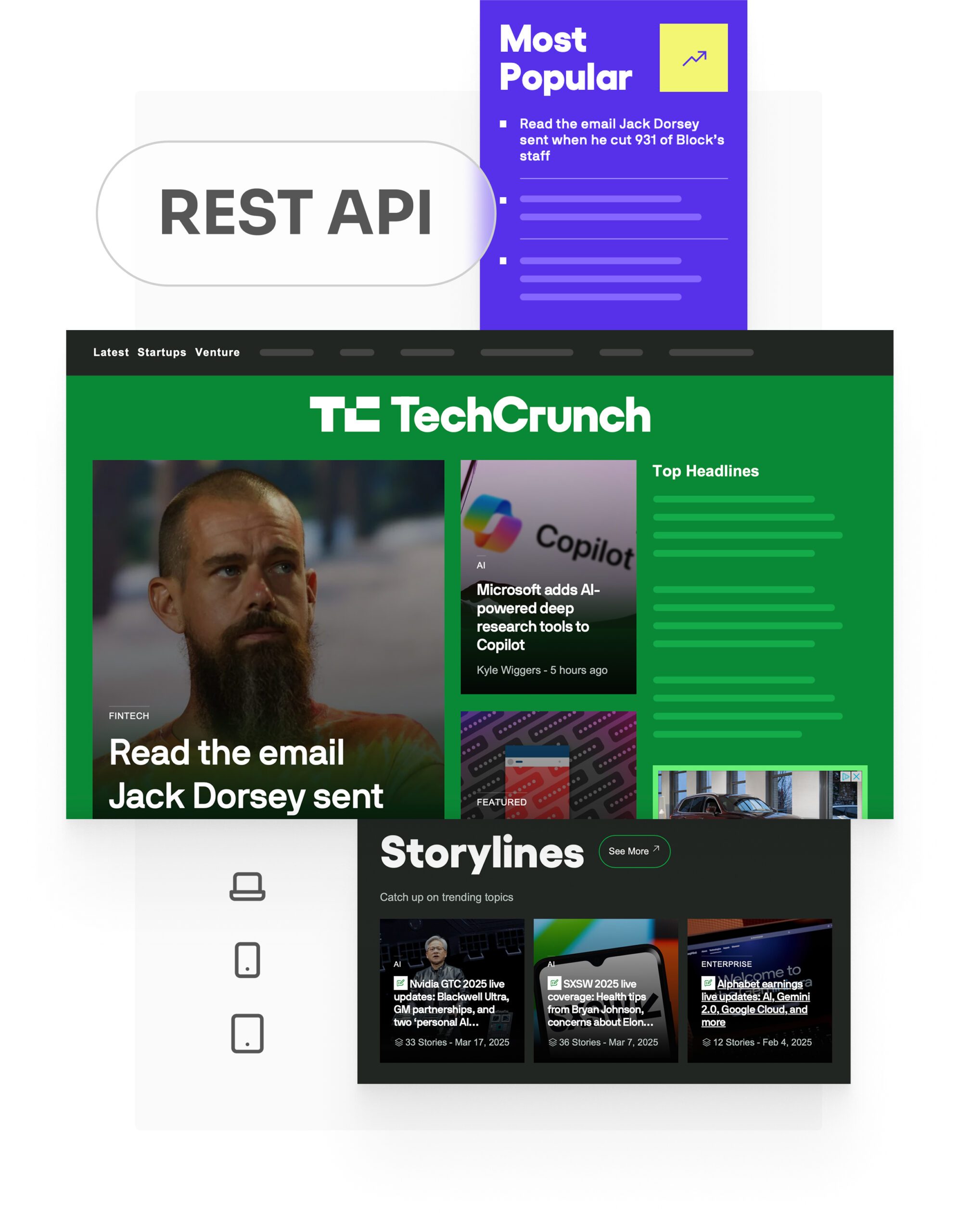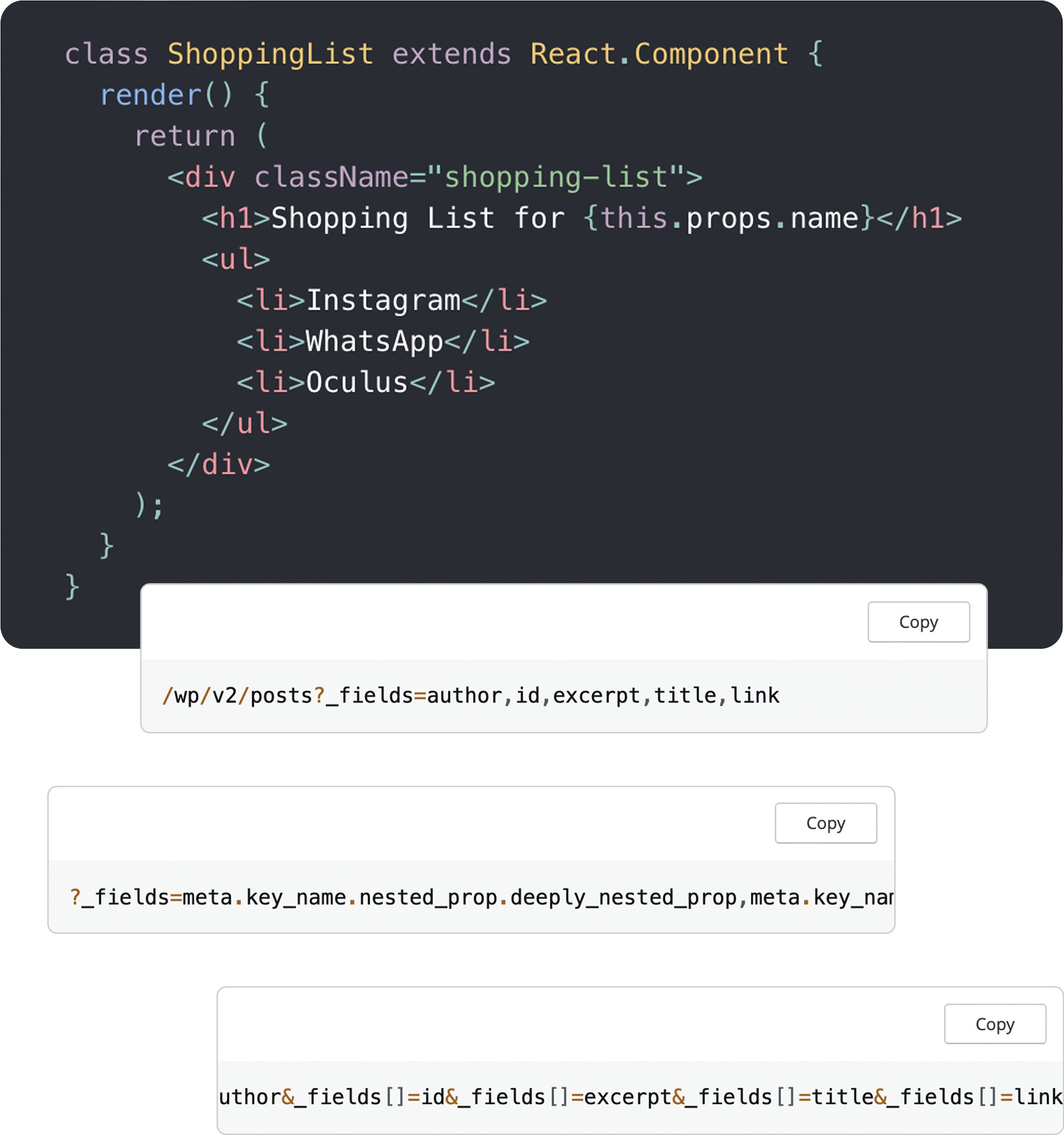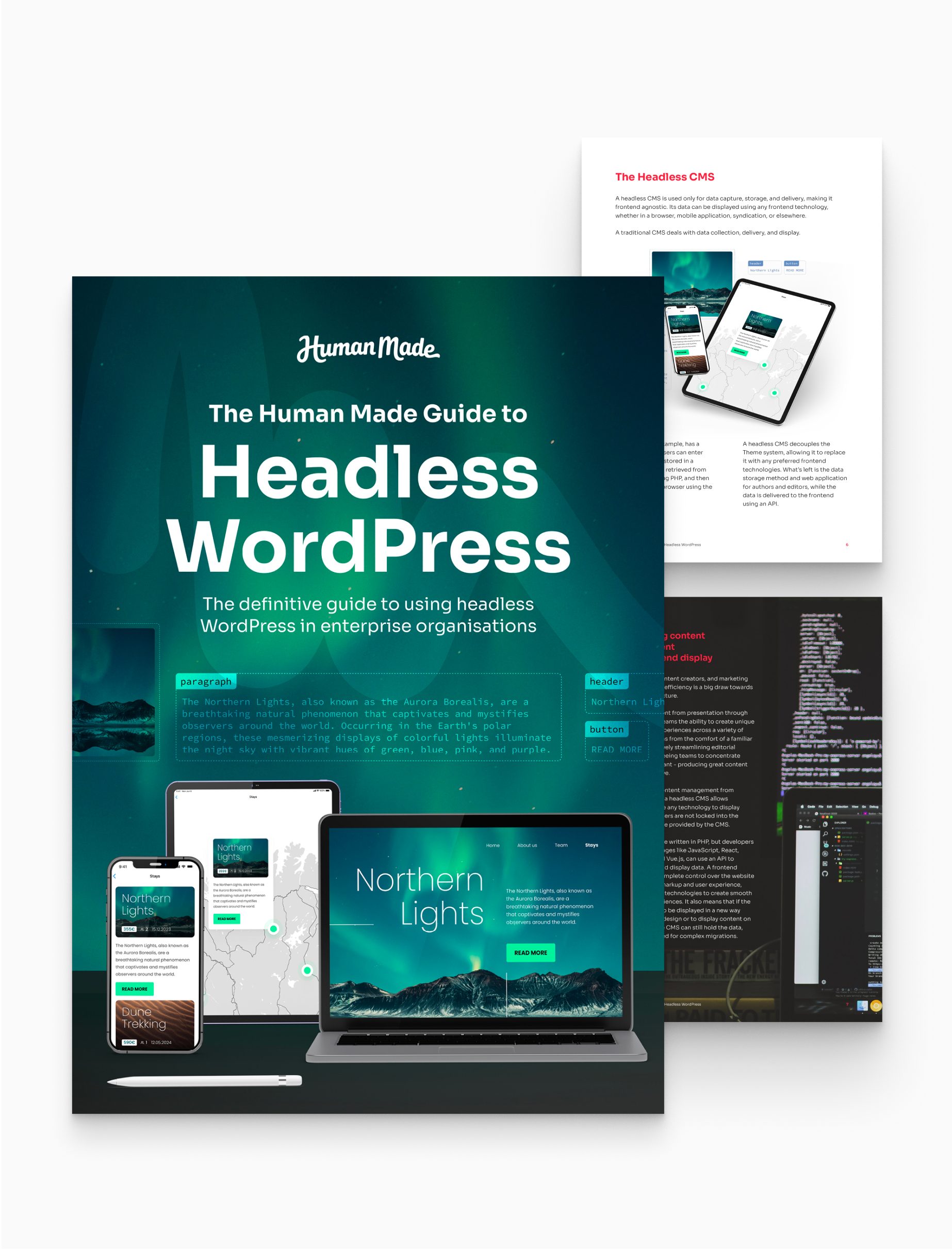WordPress: Headless
Headless WordPress
Headless & decoupled architecture for modern development teams
Whether you’re building a decoupled site, powering a mobile app, or managing multi-channel publishing, WordPress slots seamlessly into your modern decoupled or headless stack via the REST API.
The WordPress REST API unlocks your content, making it accessible to any frontend, framework, or application. Created by Human Made’s Ryan McCue, the REST API is a core feature of WordPress and a cornerstone of headless, decoupled and hybrid architectures.

Read the case study: TechCrunch
What is a decoupled WordPress setup?
A decoupled (or headless) WordPress architecture separates the backend CMS from the frontend presentation layer.
Content is exposed as JSON and accessed via standard HTTP requests, meaning you can publish with WordPress and display content using any frontend technology: React, Vue, mobile apps, SPAs, and more.
This gives developers complete freedom to build the user experience they want, while content editors continue using the familiar WordPress interface.
Key features
JSON-based content delivery via WordPress’s built-in content API
Frontend flexibility – design in React, Vue, Next.js, or native apps
Custom endpoints and authentication for advanced integrations
Compatible with mobile, kiosk, and multi-channel applications

Included in WordPress core – no plugin required
Learn how ustwo built a React-powered frontend with a modular WordPress backend.

Benefits of headless WordPress for enterprise teams
- Use any frontend:
Decouple your stack and design without theme limitations - Build faster:
Enable parallel development across backend and frontend teams - Centralise content:
Manage once, publish everywhere – web, app, or beyond - Work with live data:
Frontend developers access real-time content via the API - Leverage existing tools:
Integrate WordPress into a wider digital ecosystem

Decoupled WordPress use cases
Higher Education
Support distributed content teams across departments, faculties, and research centres. Deliver content to student portals, apps, and microsites – all powered by a single backend.
Financial Services
Maintain compliance and performance while modernising your tech stack. Use WordPress for content entry, governance and deliver secure, fast, custom frontends across regions and products
Publishing and Media
Push editorial content to multiple channels – apps, syndication partners, subscription platforms – from one backend. Maintain a single source of truth for all your publishing needs.
Enterprise Organisations
Integrate your digital ecosystem as a headless CMS within a multi-service architecture to power content across sites, platforms, internal tools, while preserving editorial workflows.
Migrating to a headless WordPress architecture.
Transitioning to a decoupled WordPress architecture requires a strategic approach. Human Made helps teams:
- Train editorial and technical teams on new workflows
- Audit existing themes, content structures, and APIs
- Define modular content models and authentication flows
- Create custom endpoints and page builder workflows
- Integrate React, Vue, or mobile frontends with WordPress
- Ensure accessibility, performance, and SEO are covered
- Train editorial and technical teams on new workflows

The Human Made Guide to Headless WordPress
This guide looks at what a headless CMS is, explores the advantages and disadvantages, and helps you decide if it’s right for you.
Download this guide to find out:
- How Human Made helped TechCrunch and Fairfax Media to go headless
- What a headless CMS is
- How a headless CMS works
- How the REST API powers headless WordPress
- The advantages and disadvantages of going headless
Why Human Made?
We co-created the WordPress REST API, meaning we’re experts in decoupled WordPress setups. We’ve implemented it for global brands, SaaS platforms, universities, and publishers.
Whether you’re building your first headless frontend or scaling a fully decoupled architecture, we’ll help you plan, implement, and optimise with confidence.
Get in touch
This form may not be visible due to adblockers, or JavaScript not being enabled.